School of rocks aims to train new generation of dry stone wallers
- Published

Until now training courses have been typically held at fields where farmers have given permission
A centre is being created to train a new generation in the art of dry stone walling amid a growing interest in the technique.
The craft - also know as drystane dyking - dates back 5,000 years in Scotland. Carefully-selected interlocking stones are used to make walls without the need for any mortar to bind them together.
They were traditionally used for the boundaries of fields and churchyards, or as retaining walls for terracing, but can also be used to build towers and other structures.
A surge in demand has led to the creation of a training centre in Fife.
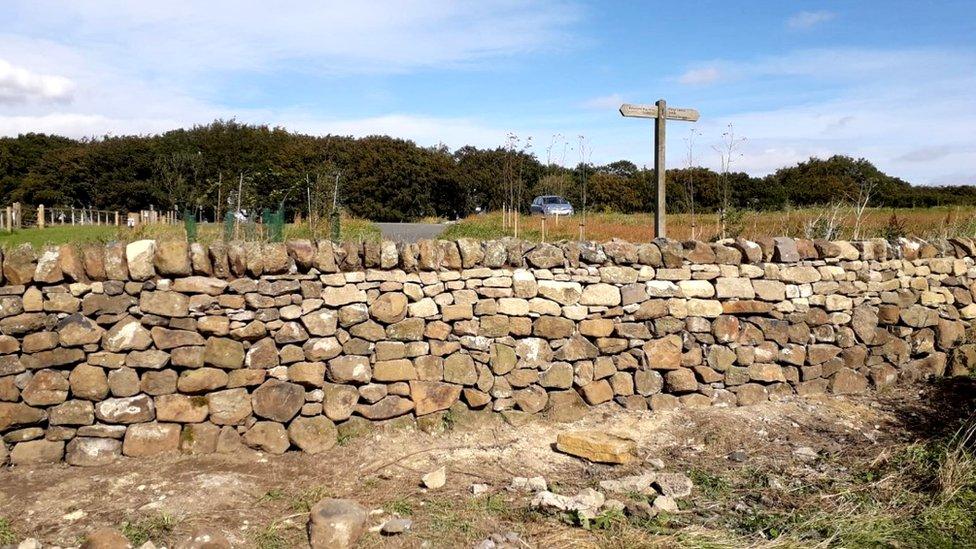
Dr Richard Love's team repaired this wall in Beecraigs Country Park in West Lothian
Until now courses have been held twice a year at farmers' fields across the country, where students are shown how to repair broken walls.
But now a purpose-built site has been created at the Scottish Lime Centre Trust in Charlestown, near Dunfermline.
Students will be able to train all year round at the centre, where they will be able to use different types of stone to build and then rip down walls, over and over again.
Training will begin next year once Covid restrictions have been lifted.
Dr Richard Love said the centre had been created to preserve the craft and help students realise their dreams.
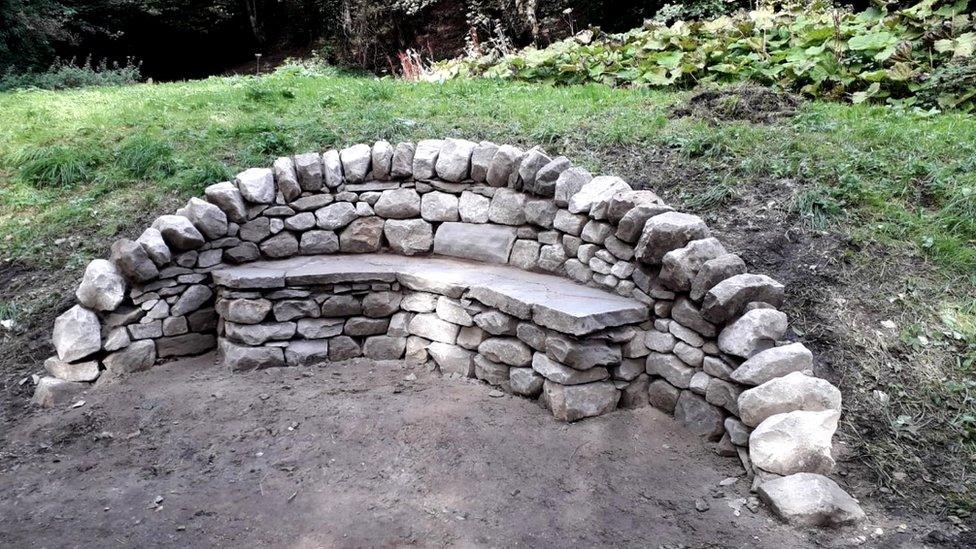
He is an advanced dry stone waller and chairman of the South East Scotland branch of the Drystone Walling Association.
Dr Love said there had been a surge in demand for work.
He said: "Dry stone walls are coming back into fashion because they are beautiful to look at and because they are sustainable. They are made with a natural material and don't use carbon intensive cement.
"It is a natural product, the labour is carbon neutral and it has a satisfying end product. They also last longer than a fence.
"So the increase in demand we have been seeing is partly for environmental reasons, as well as down to the attractiveness of them."
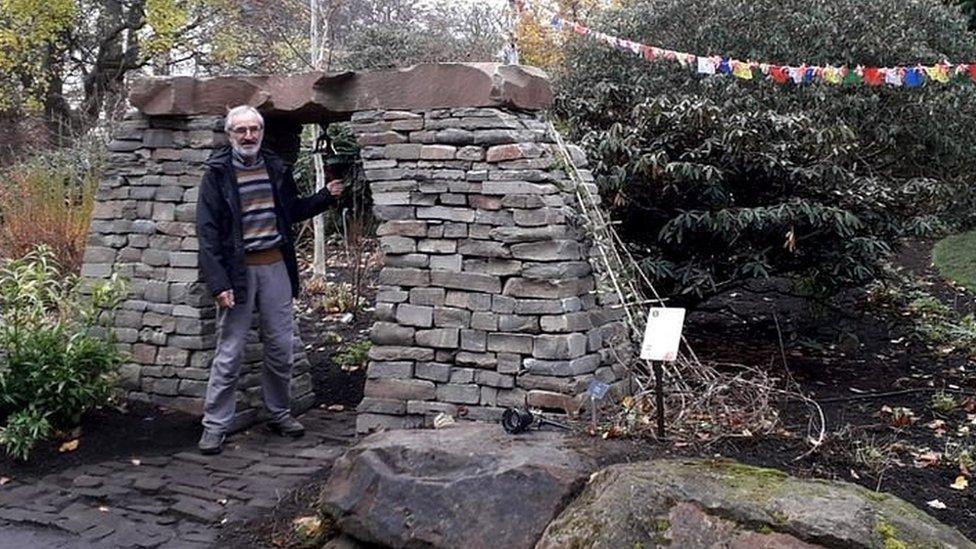
Dr Love at a Nepalese prayer gate he built in the Royal Botanic Gardens Edinburgh
He said dry stone walling was a "mental jigsaw" rather than just a jumble of stones.
"You have to create joints and build a pattern with stones that are not shaped like bricks," he explained.
"It's like an intelligence test. You have to work out how shapes will fit together and the different orientations and juggle it all in your mind.
"Some people have an eye for it and others don't, and it's a real challenge for novices. It depends how your brain works and it's not easy to pick up."
The walls are wider at the bottom than the top, and are shaped like the letter "A".
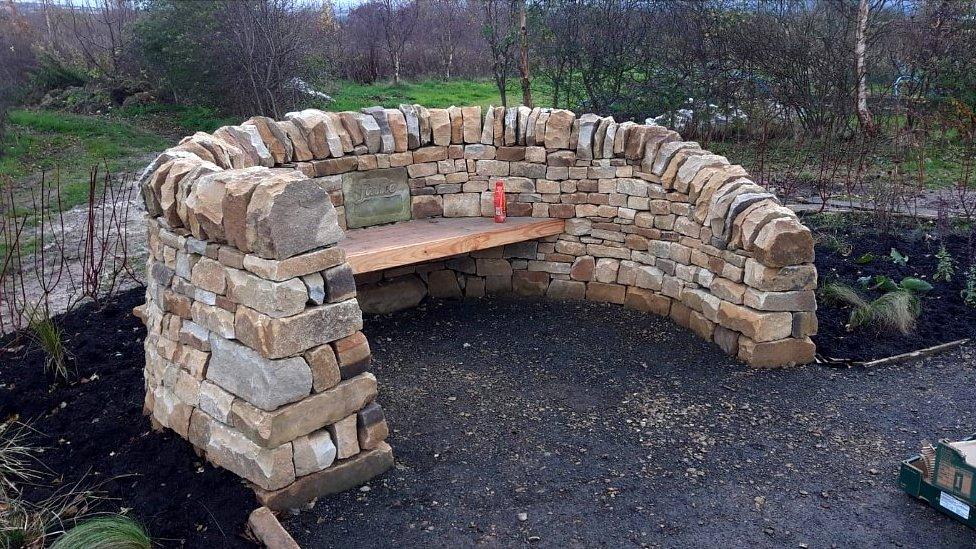
This drystone seat is in Midlothian Community Hospital Garden in Bonnyrigg in Midlothian
They are not built on concrete, so take about a year to settle.
Walls are made using layers of flat stones across vertical coping stones, with the "A" shape tying it all together.
The craftsmen would once have worked in one particular area, using material from the same quarry, but now need to know how to use different types of stone which can come from many different sites.
These days dry stone wallers use "waste" material from quarries which is too big for gravel.
A number of structures have been built recently in the Pentland Hills, which run from Edinburgh through Midlothian to the Scottish Borders.
Dr Love added: "A dry stone structure is an art, it's part of a picture rather than just a functional piece of construction.
"Some say its a craft, others an art. It's in the eye of the beholder."
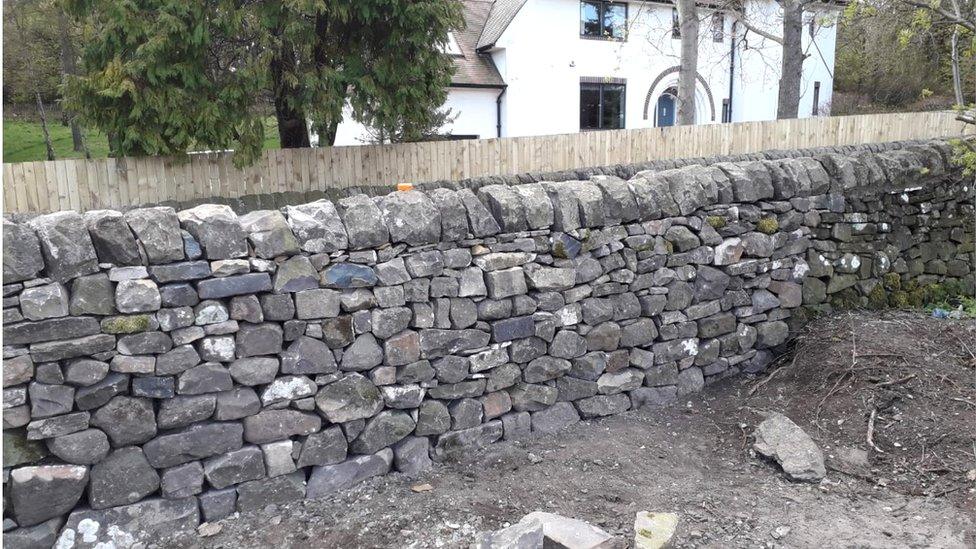
A drystone wall recently built at Murrayfield Golf Club in Edinburgh